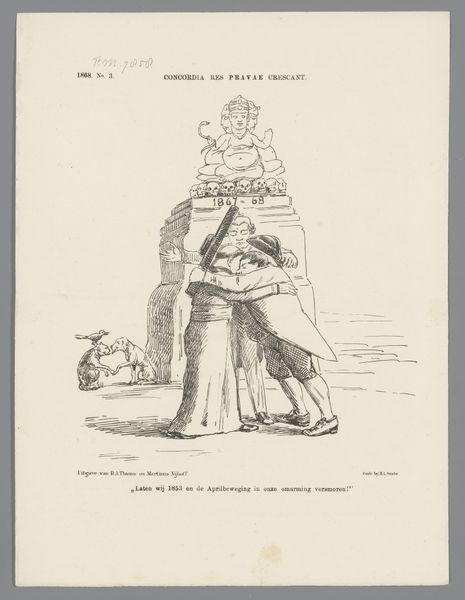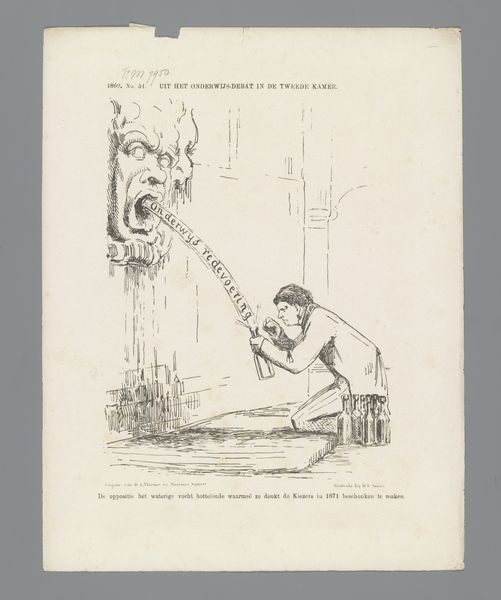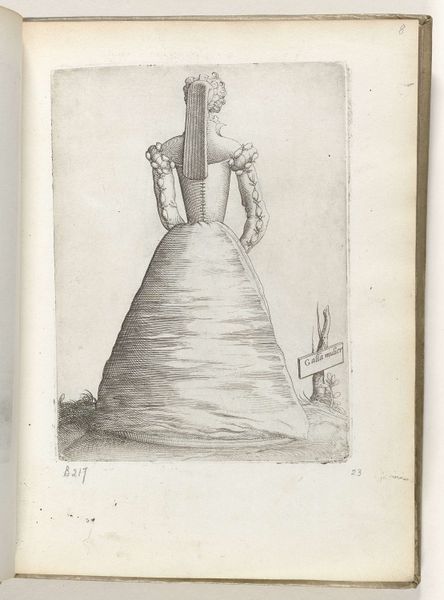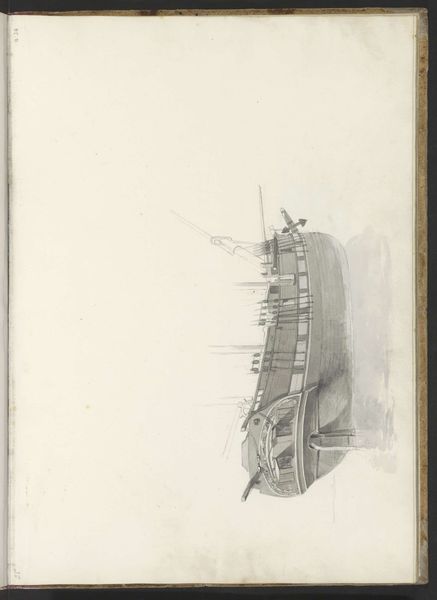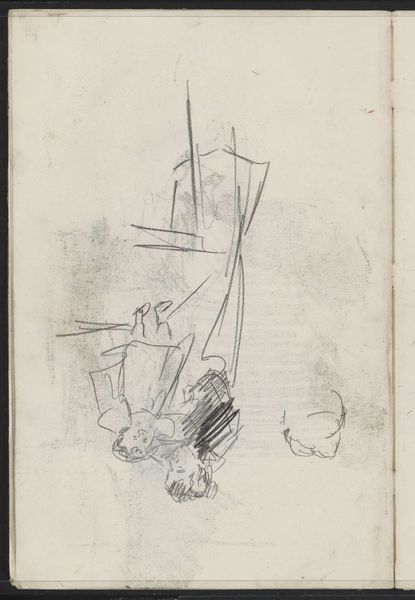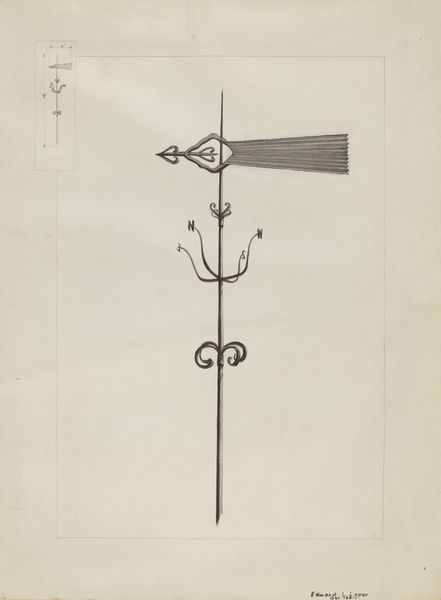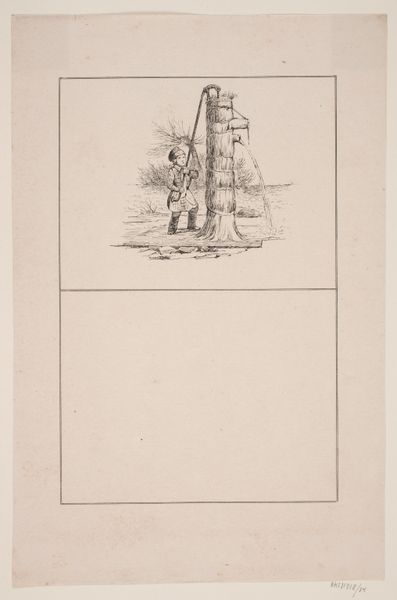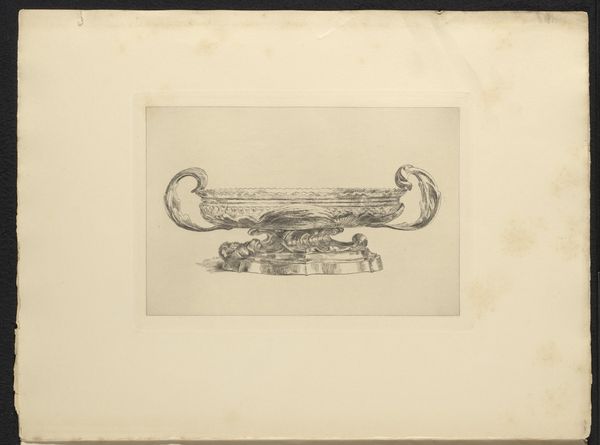
Spotprent op precaire situatie van het kabinet Fock-De Waal, 1870 1870
0:00
0:00
drawing, print, paper, ink, pen
#
drawing
#
aged paper
#
quirky sketch
#
narrative-art
# print
#
caricature
#
sketch book
#
figuration
#
paper
#
personal sketchbook
#
ink
#
idea generation sketch
#
sketchwork
#
pen-ink sketch
#
sketchbook drawing
#
pen
#
genre-painting
#
storyboard and sketchbook work
#
sketchbook art
#
modernism
Dimensions: height 275 mm, width 215 mm
Copyright: Rijks Museum: Open Domain
Johan Michaël Schmidt Crans created this drawing in 1870. A seesaw balances precariously, an image constructed with fine lines and tonal contrasts of light and shadow. The composition is arranged around a central, vertical axis, with the seesaw platform balanced atop a conical form labeled "Suiker Wet," or Sugar Law. The figures distributed on either side of the seesaw are rendered with a subtle asymmetry, disrupting the balance. This imbalance introduces a dynamic tension, suggesting the instability of the political situation. Crans uses the seesaw as a structural metaphor to represent the precariousness of power and policy. The sharp, controlled lines create a sense of precision. Crans' use of line and form transforms a political statement into a study of equilibrium and instability. It is a reminder that meaning in art is often found in its structural elements.
Comments
No comments
Be the first to comment and join the conversation on the ultimate creative platform.

